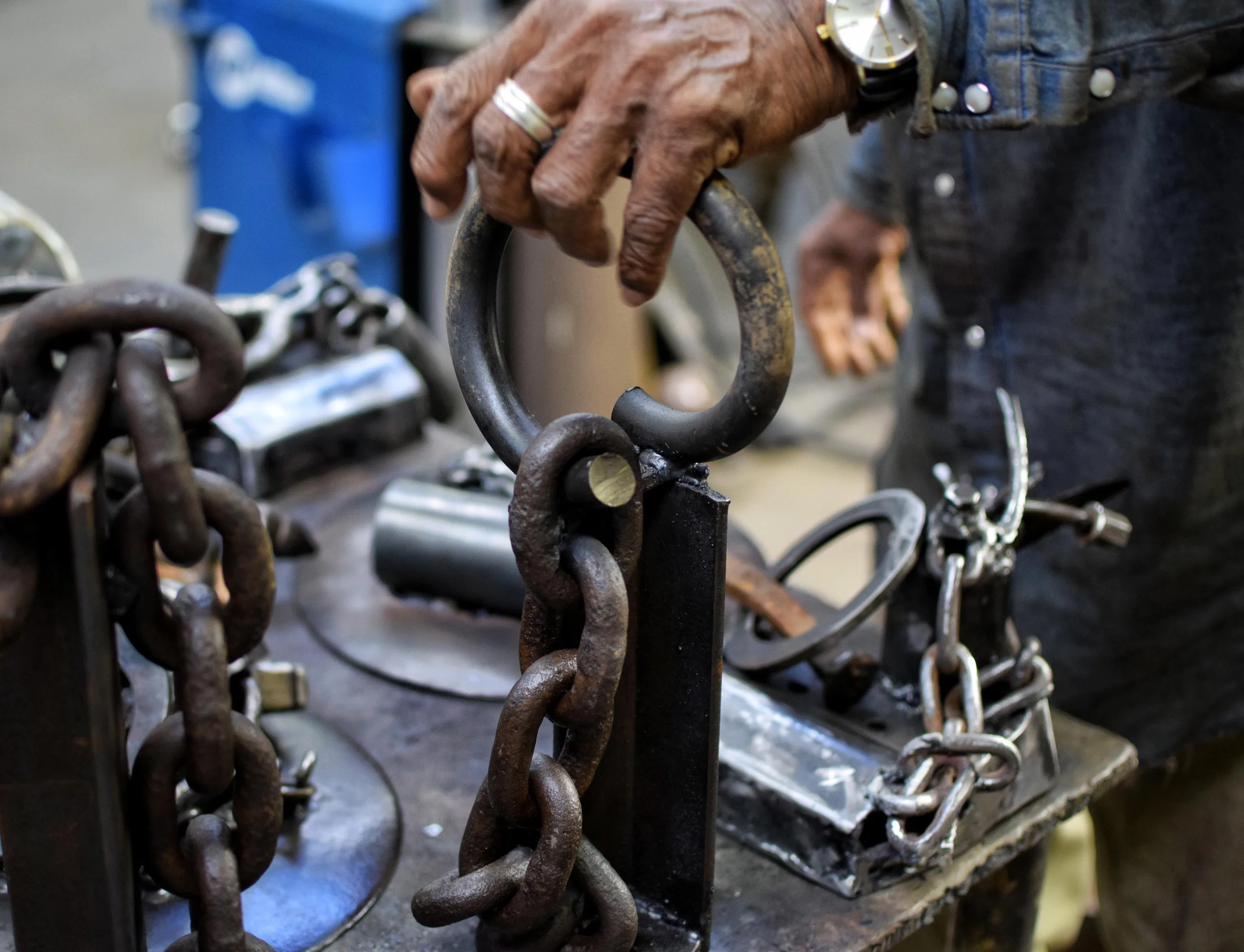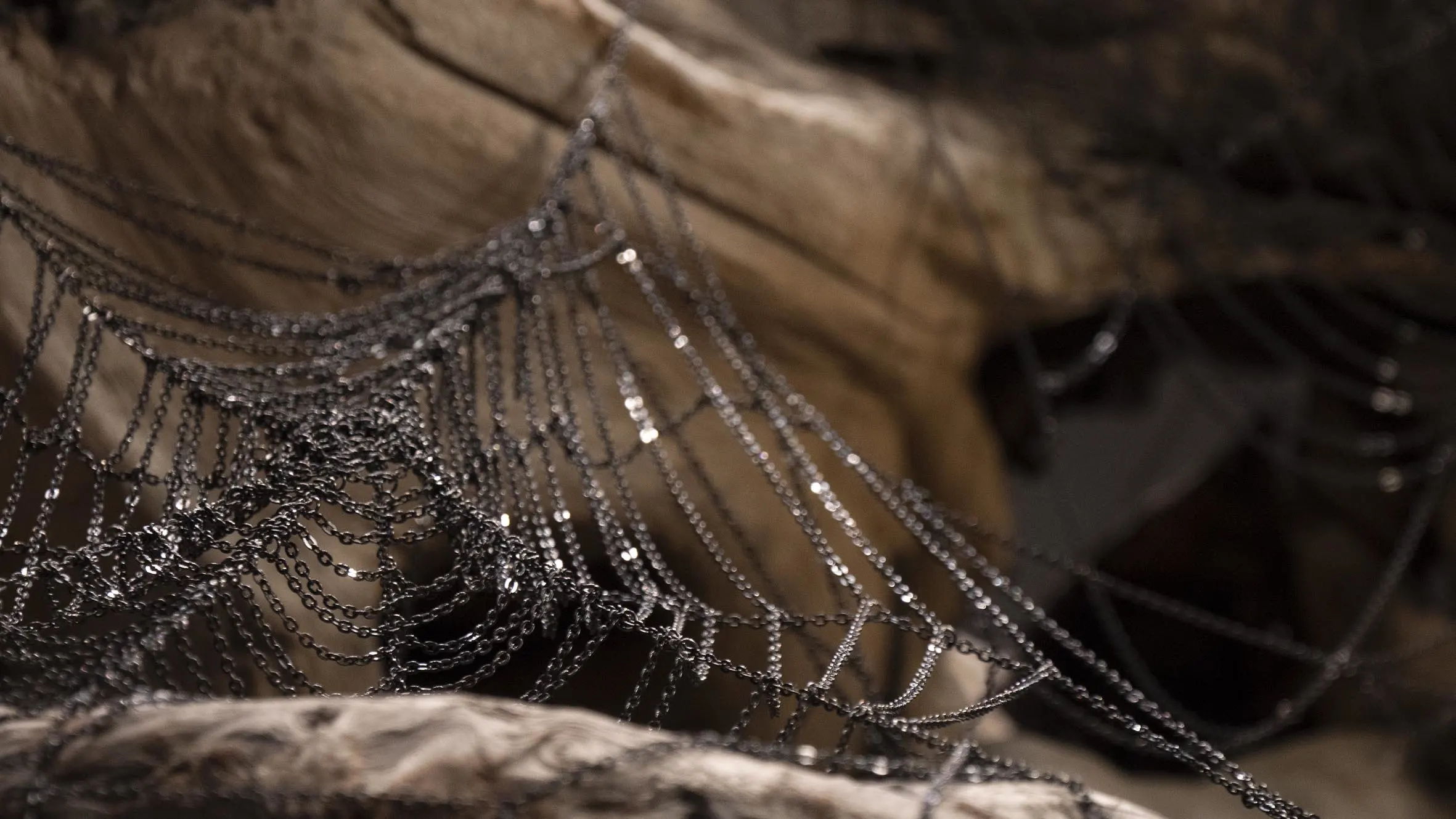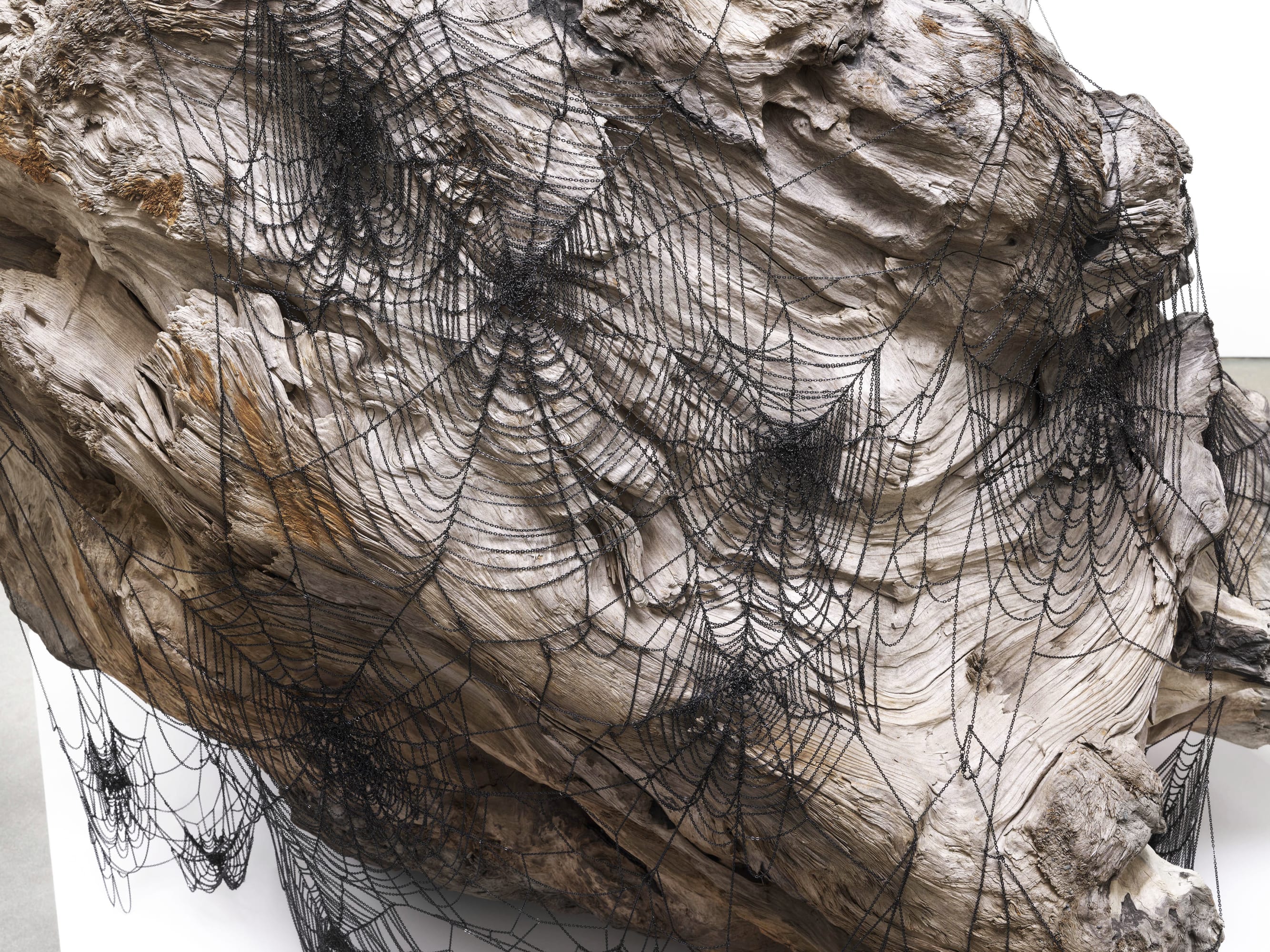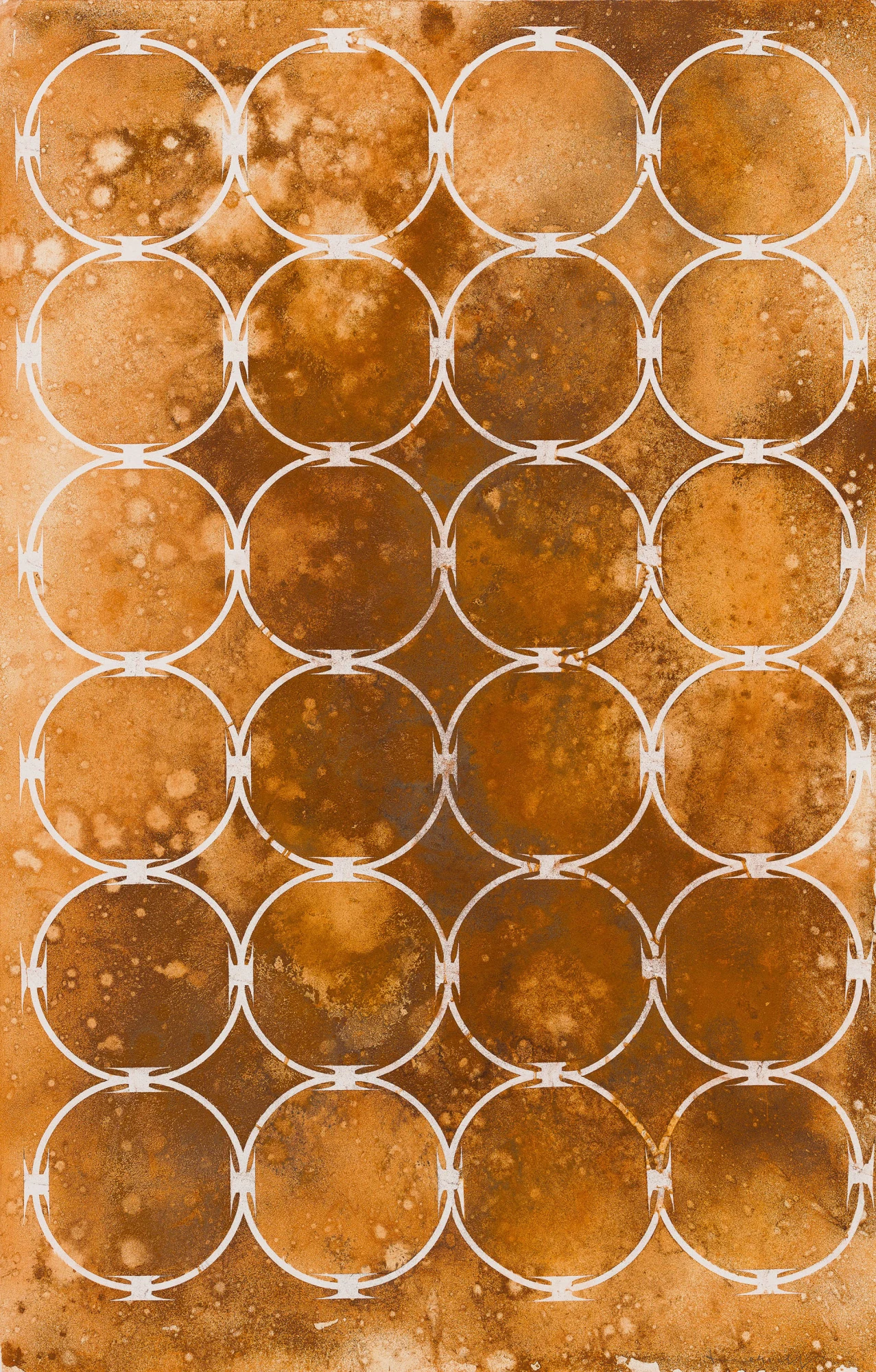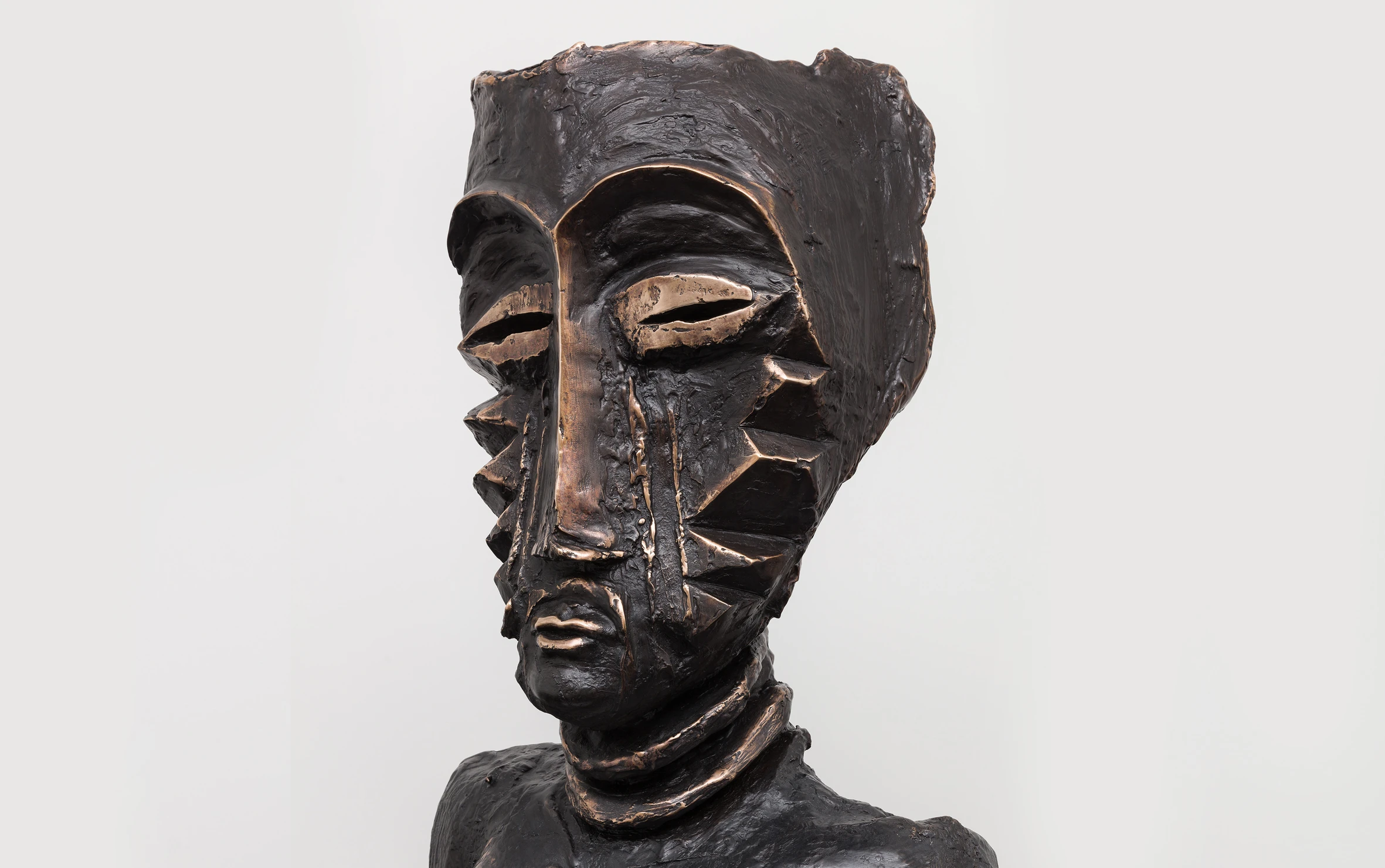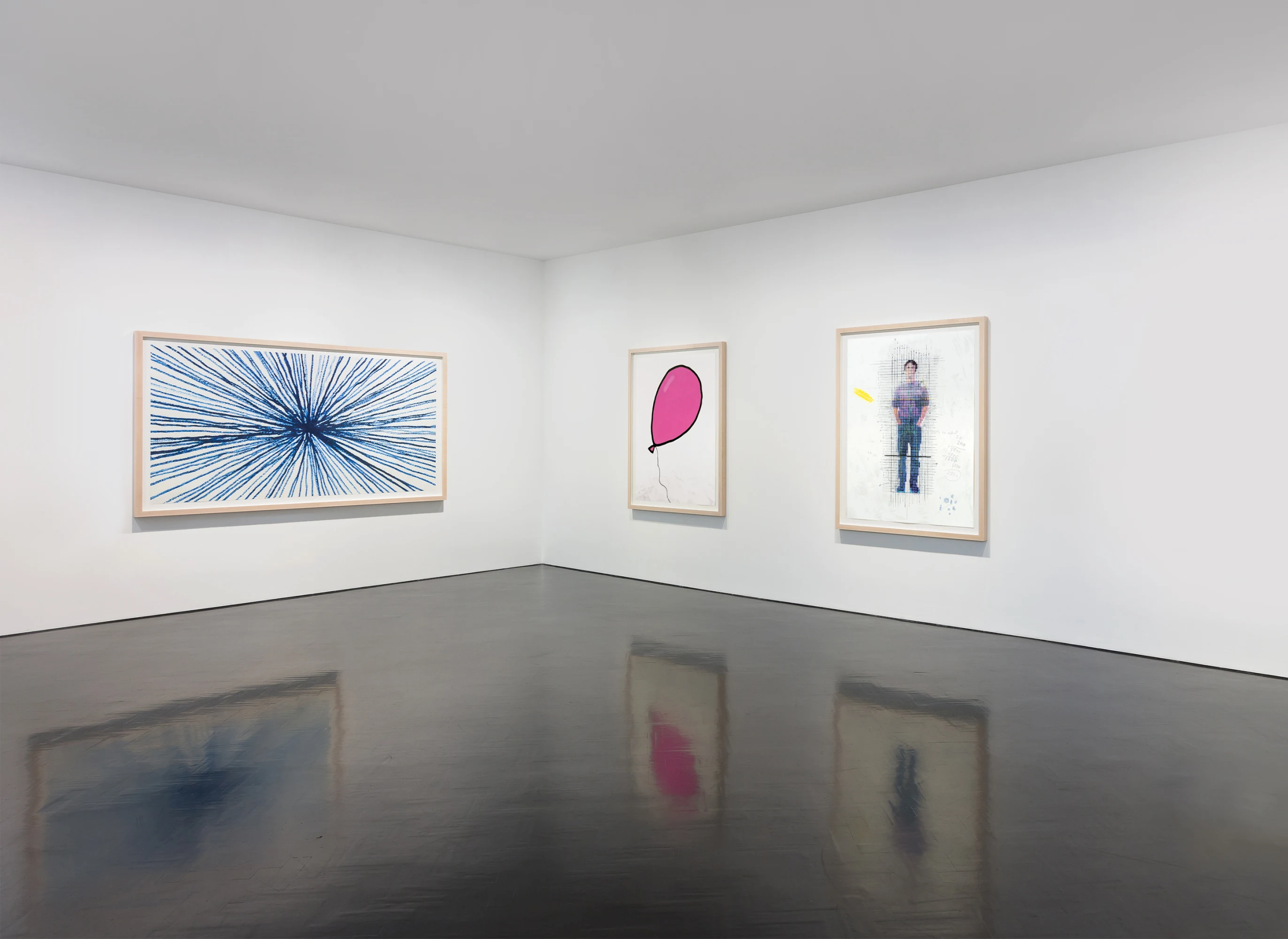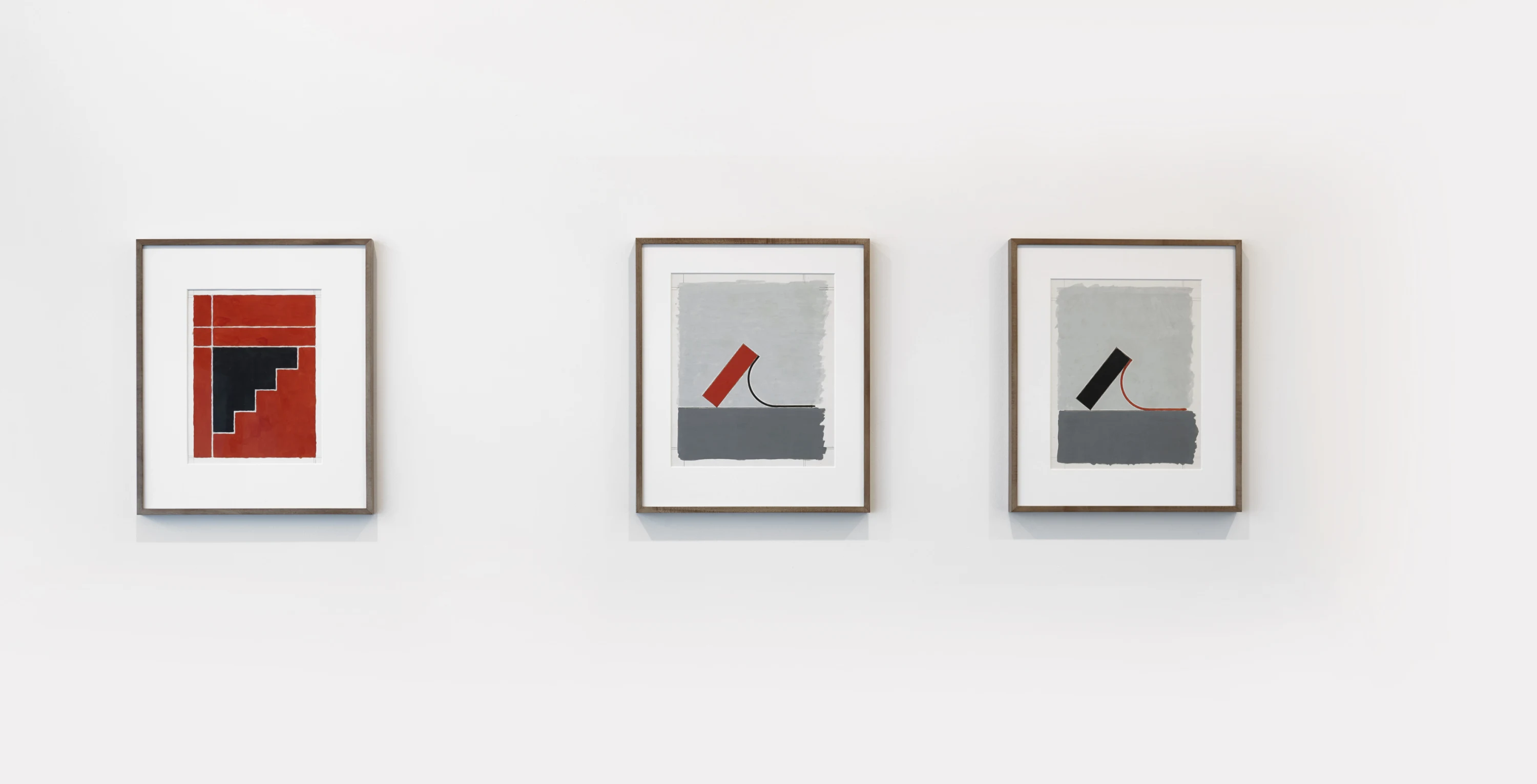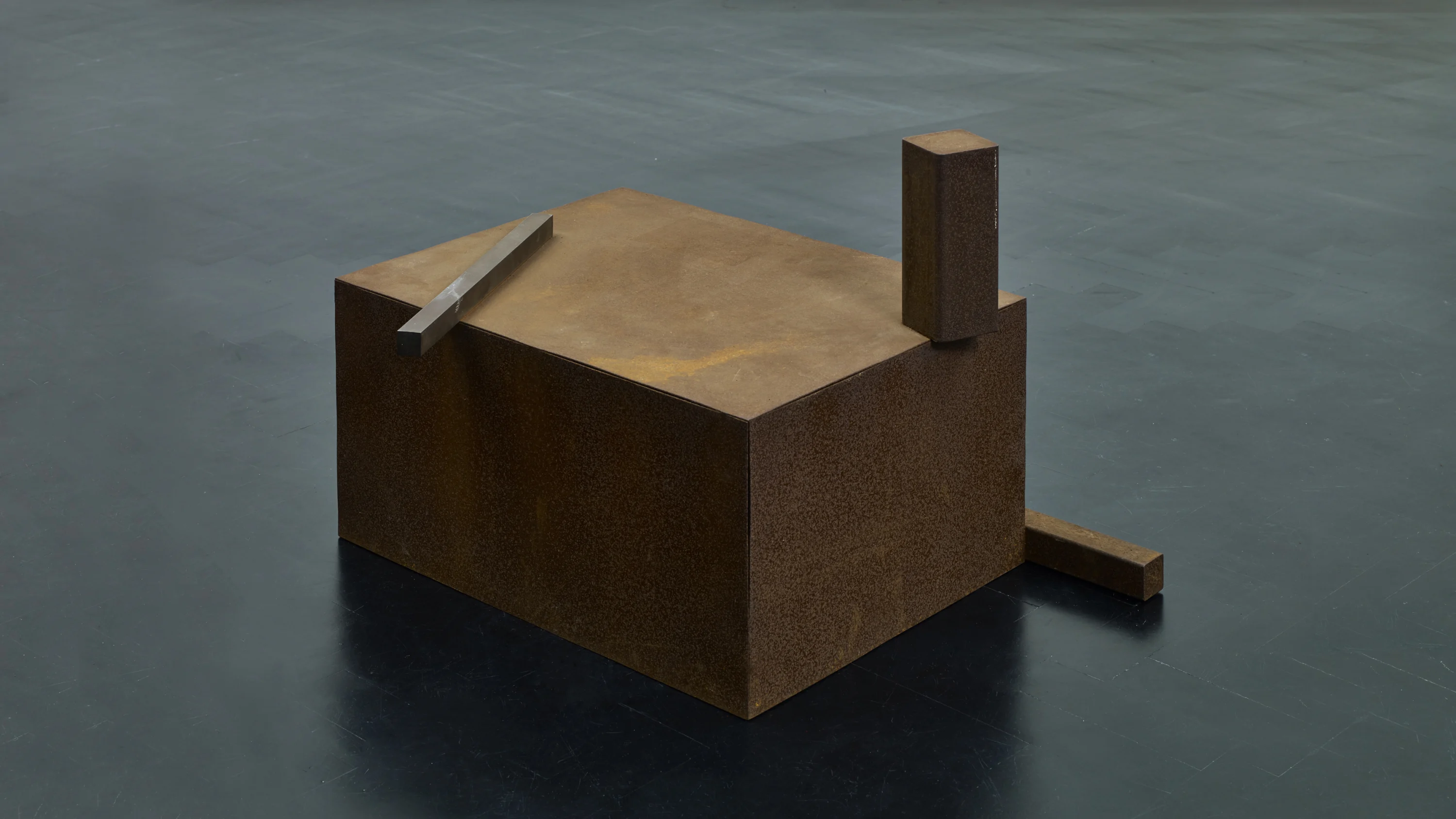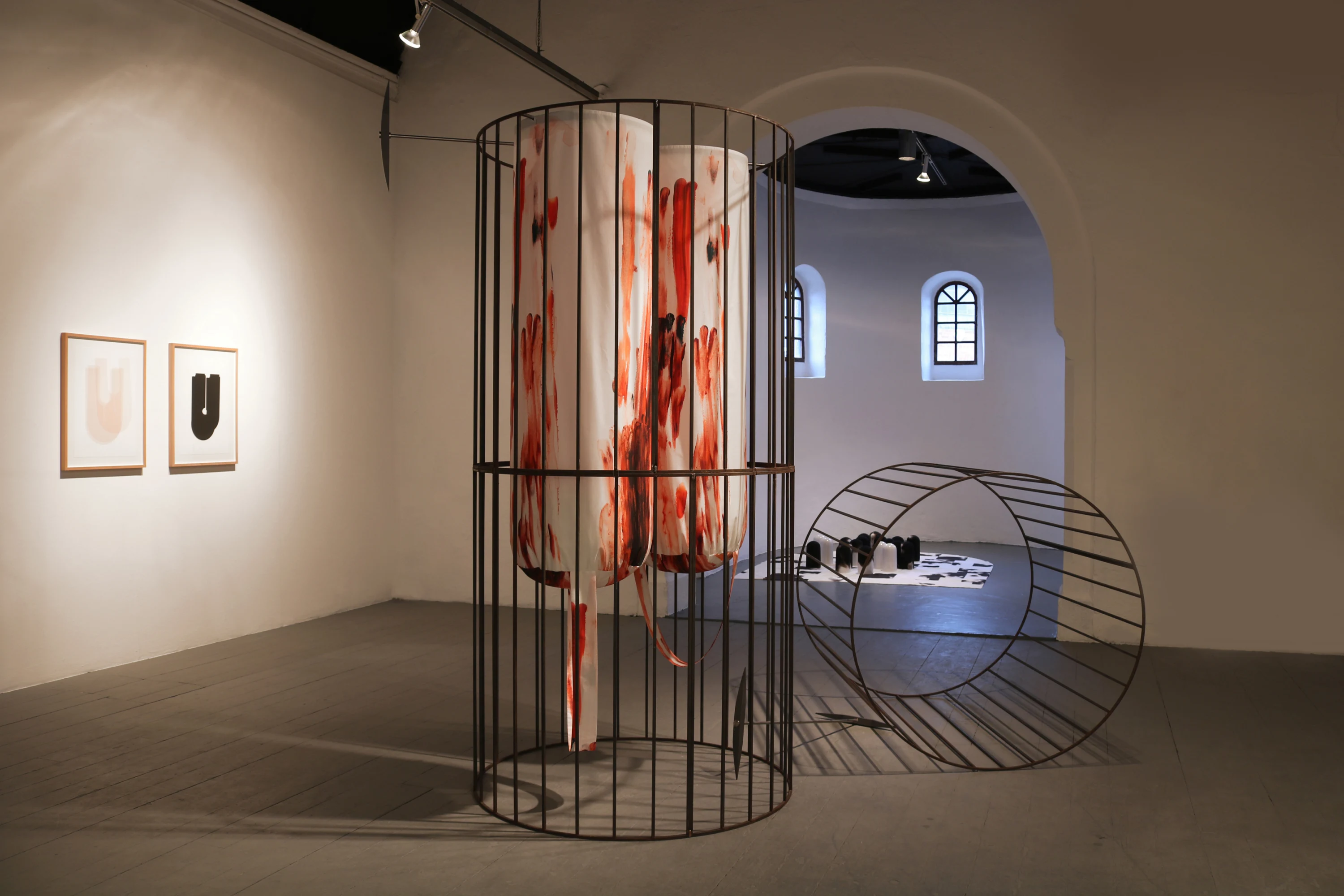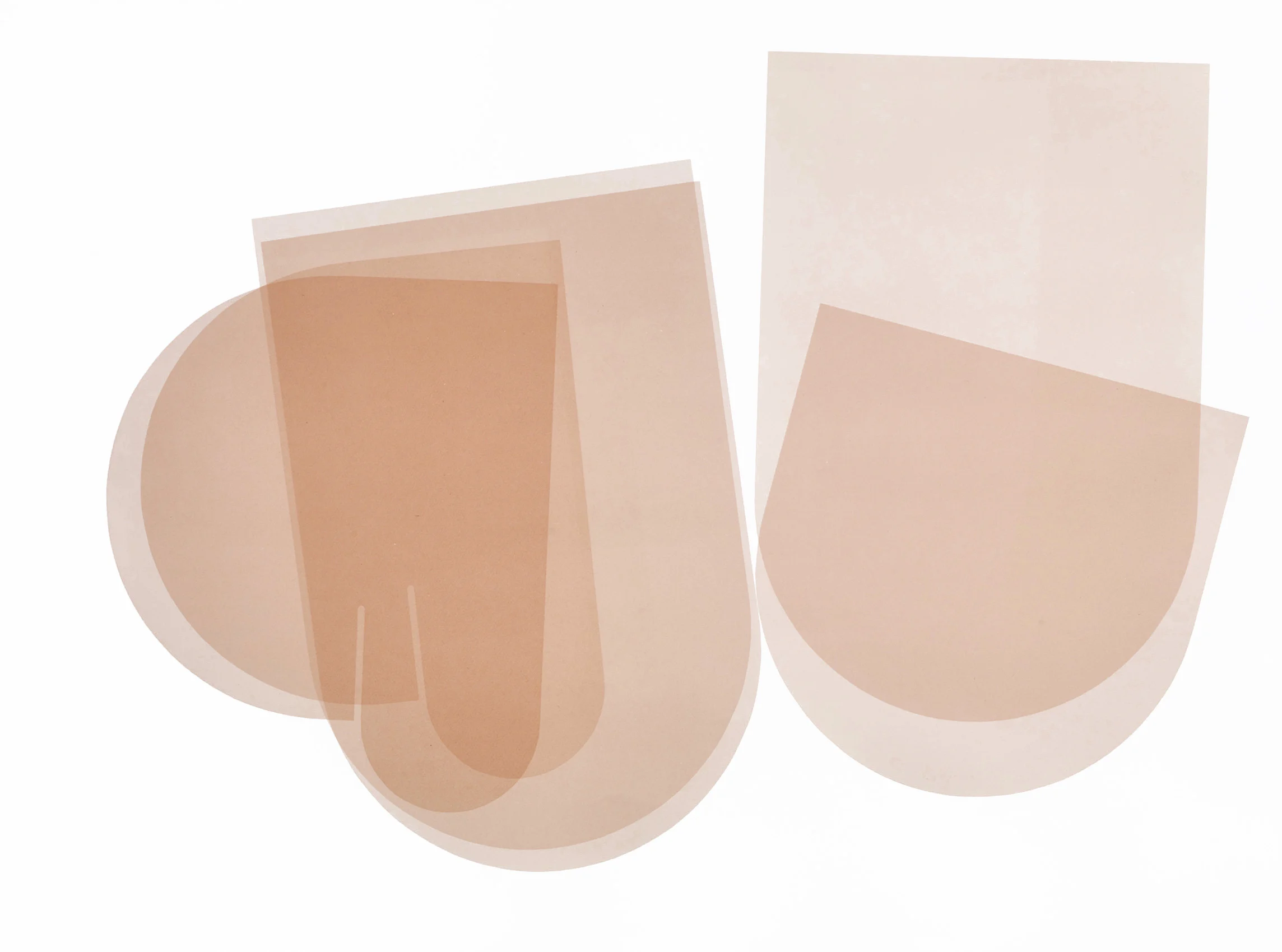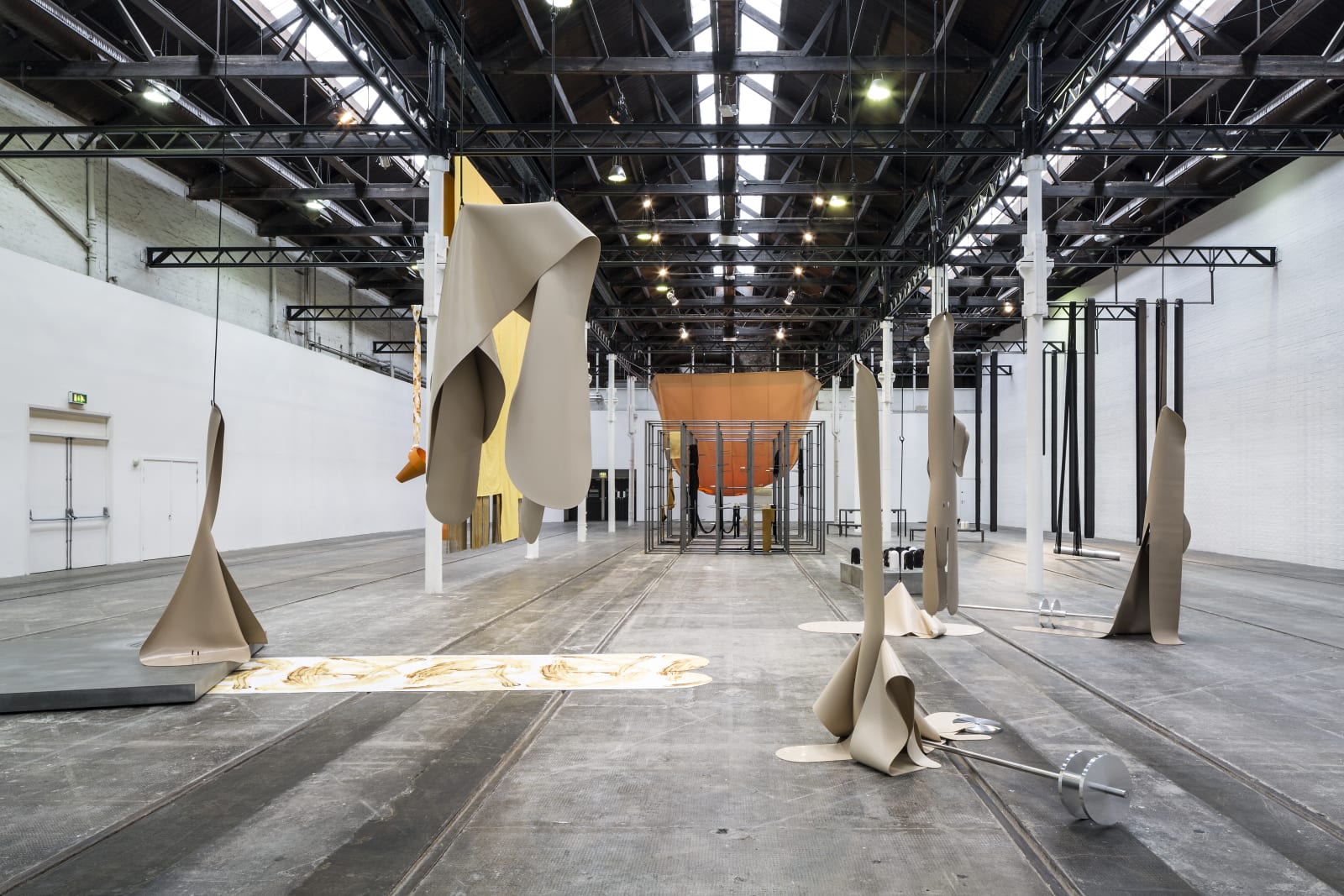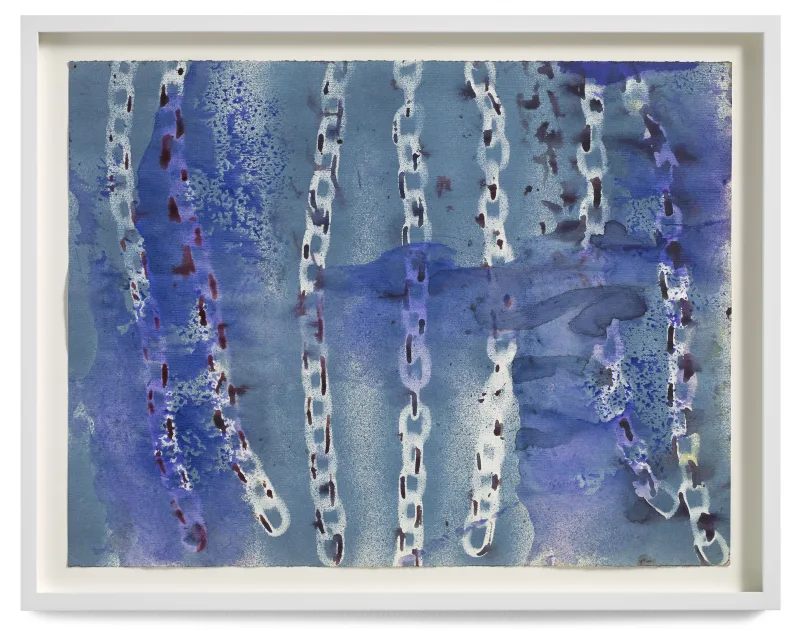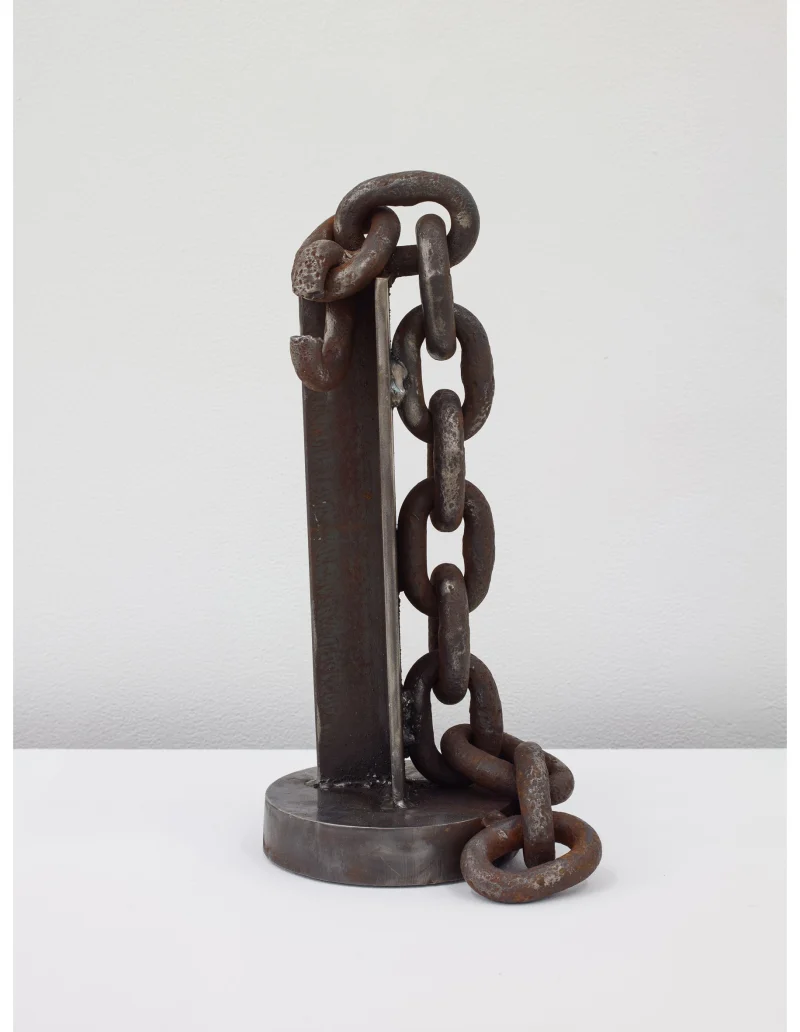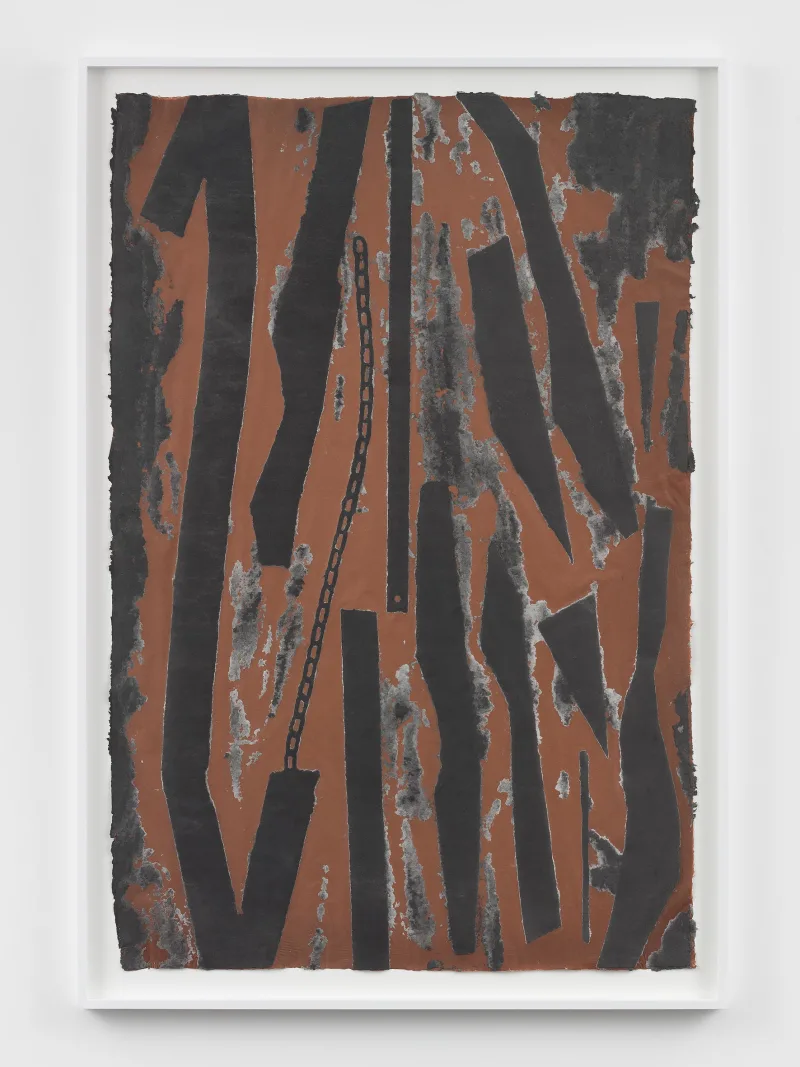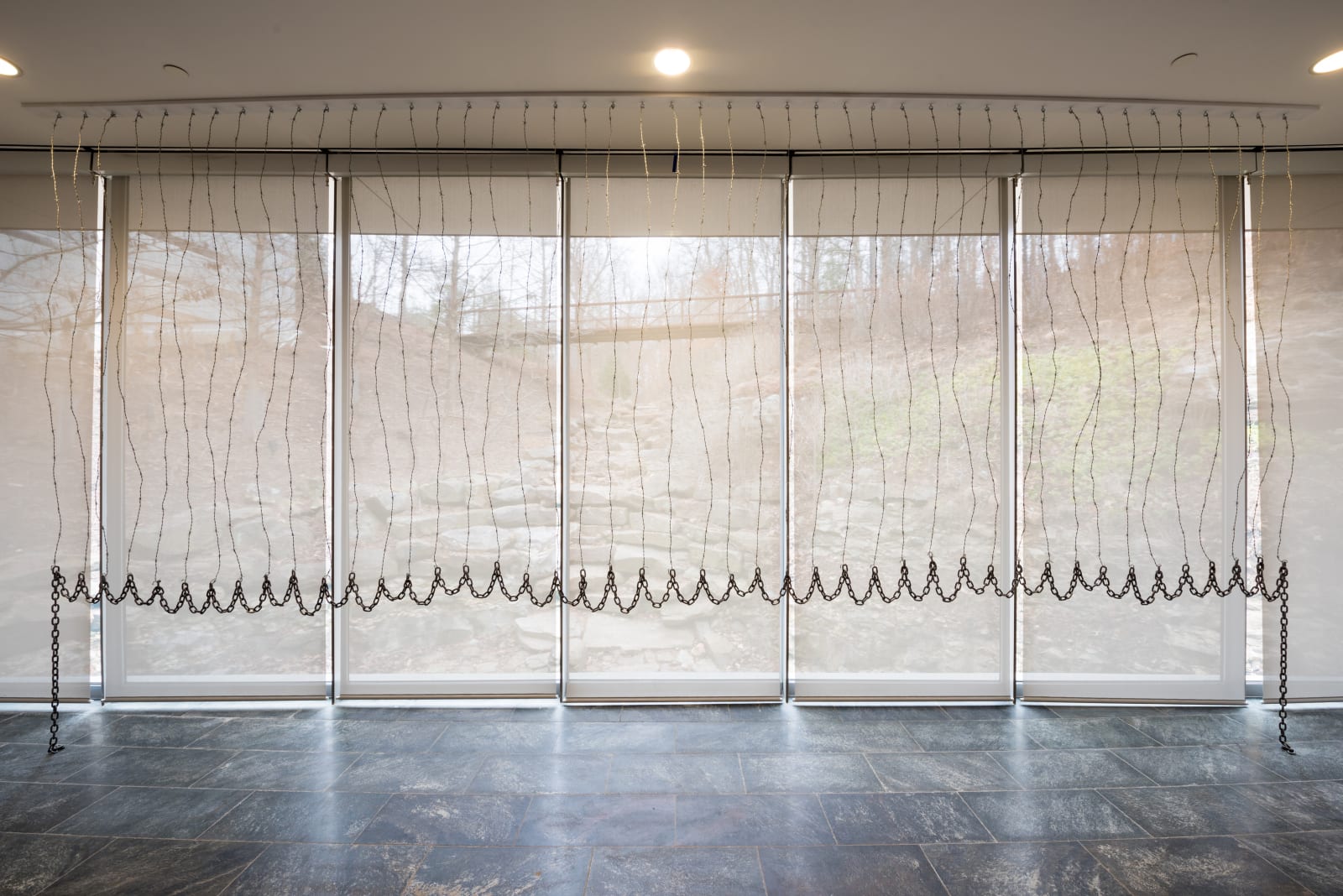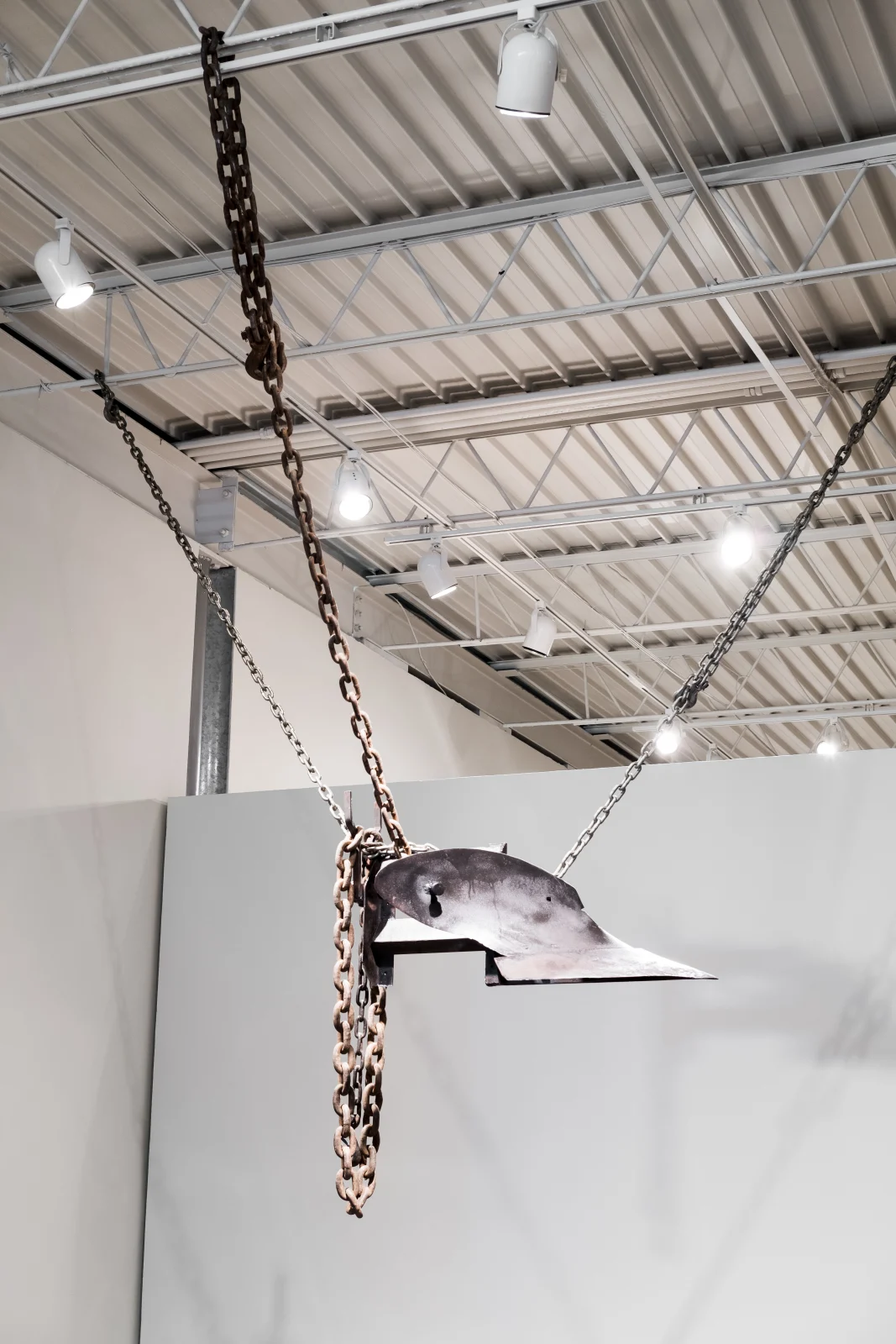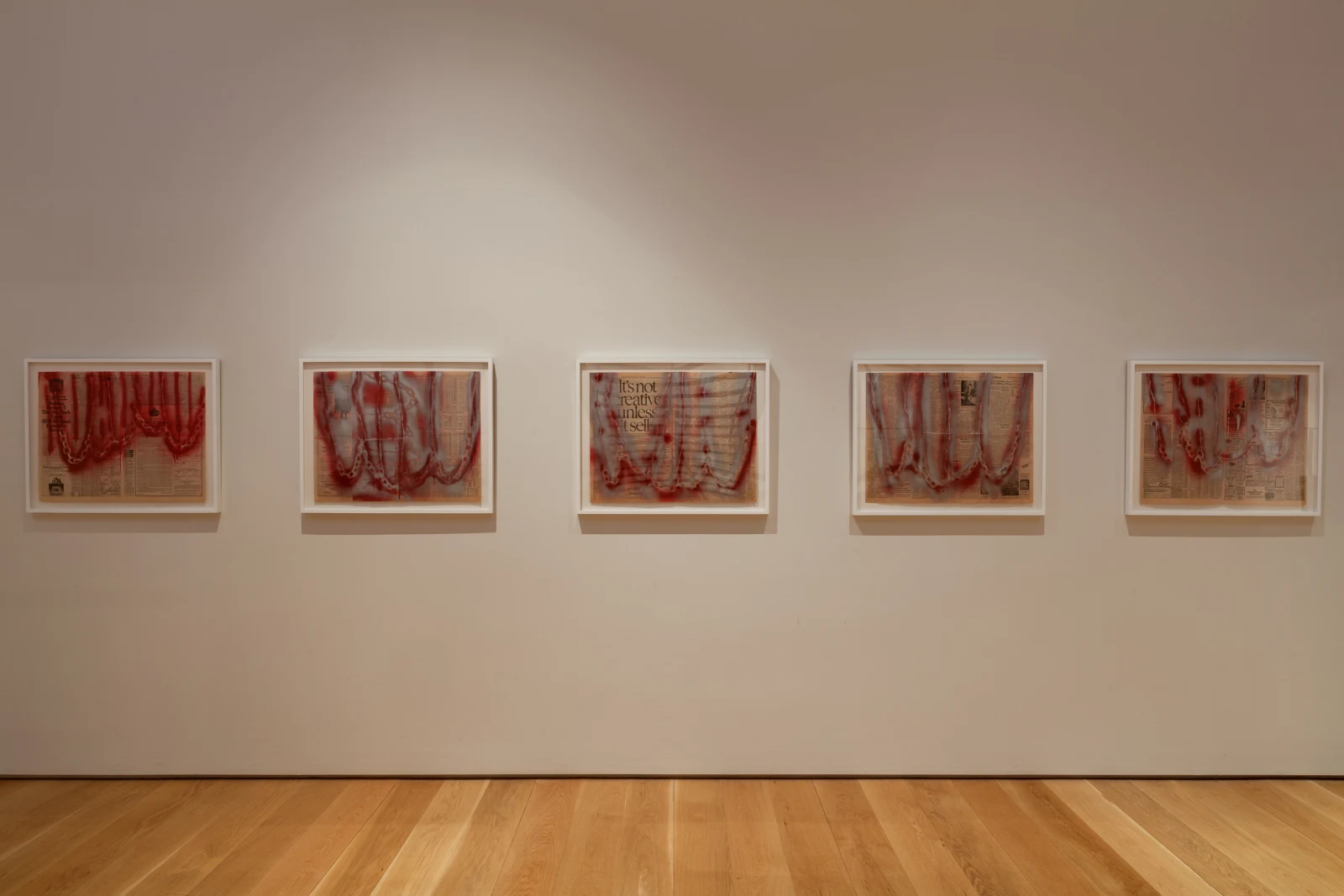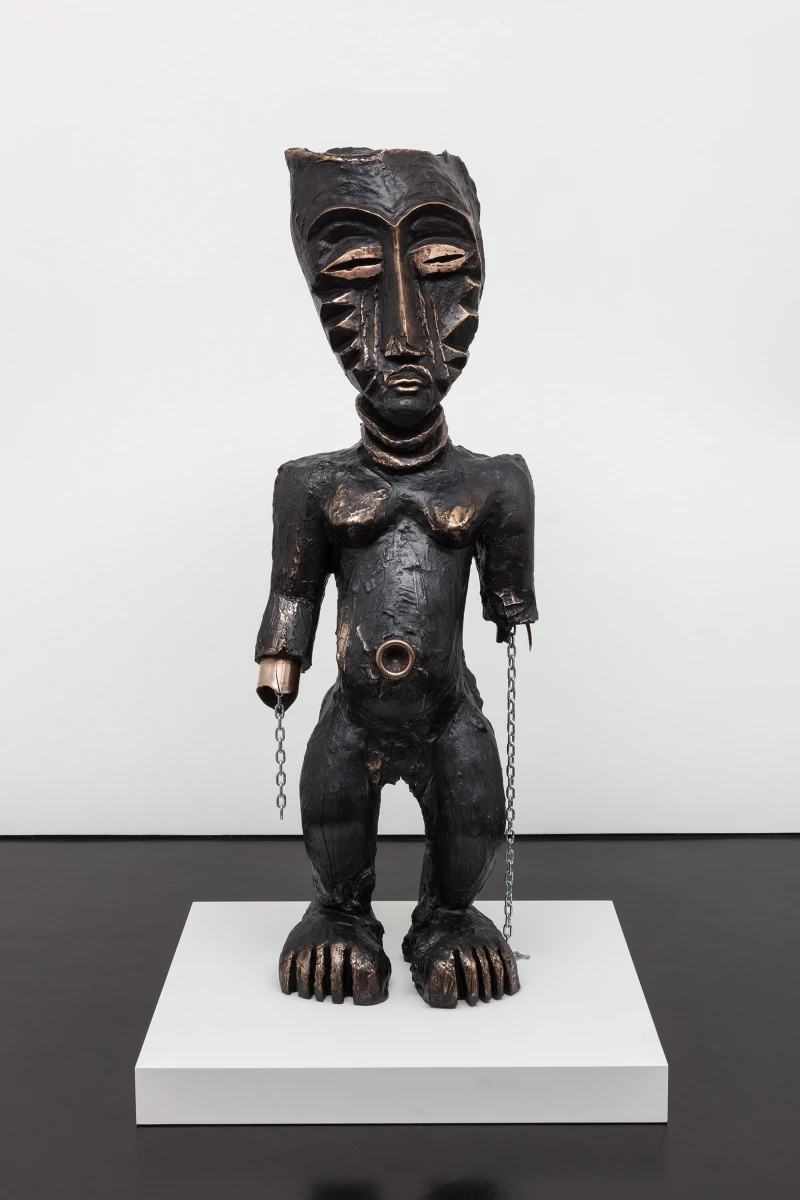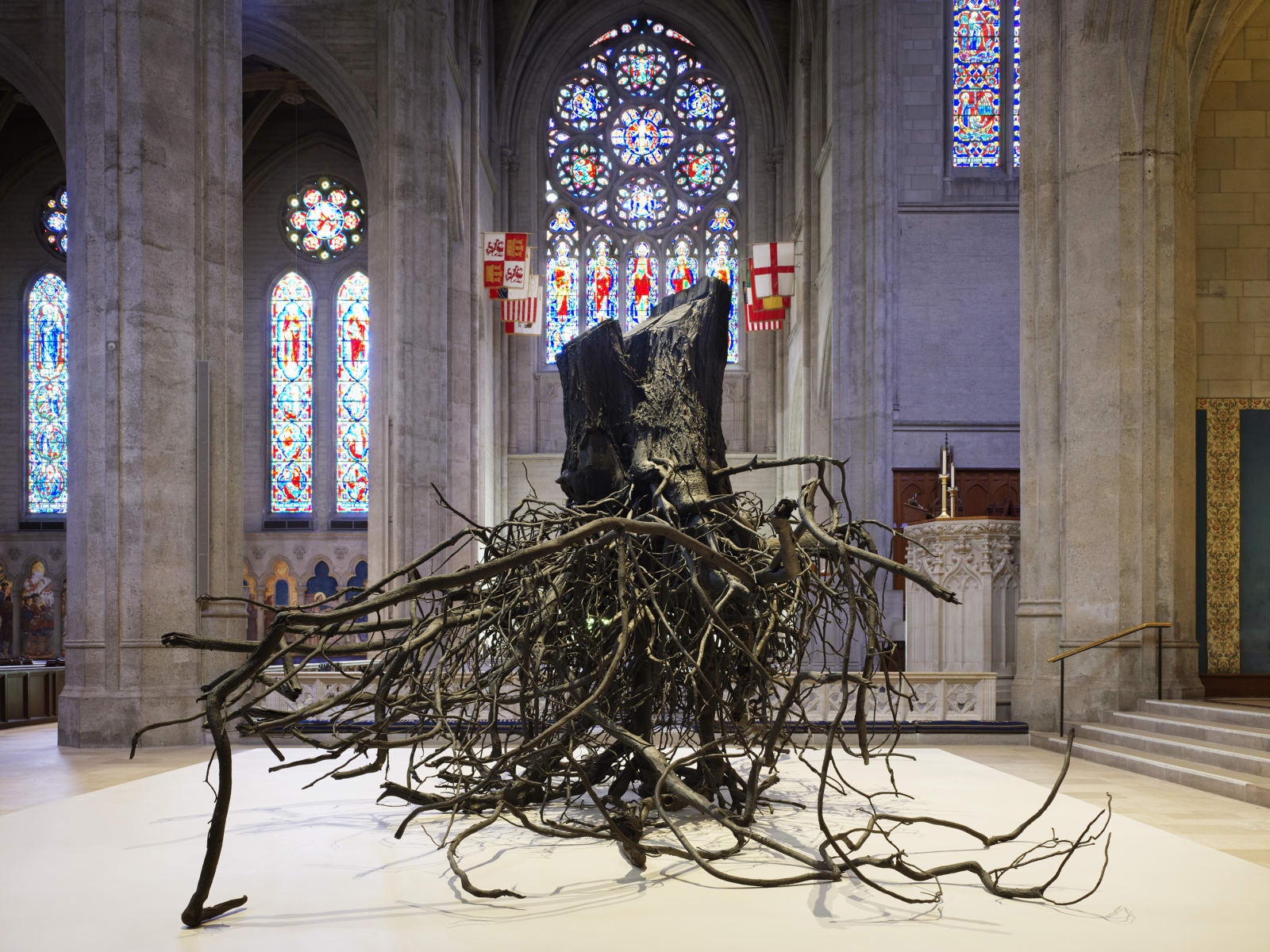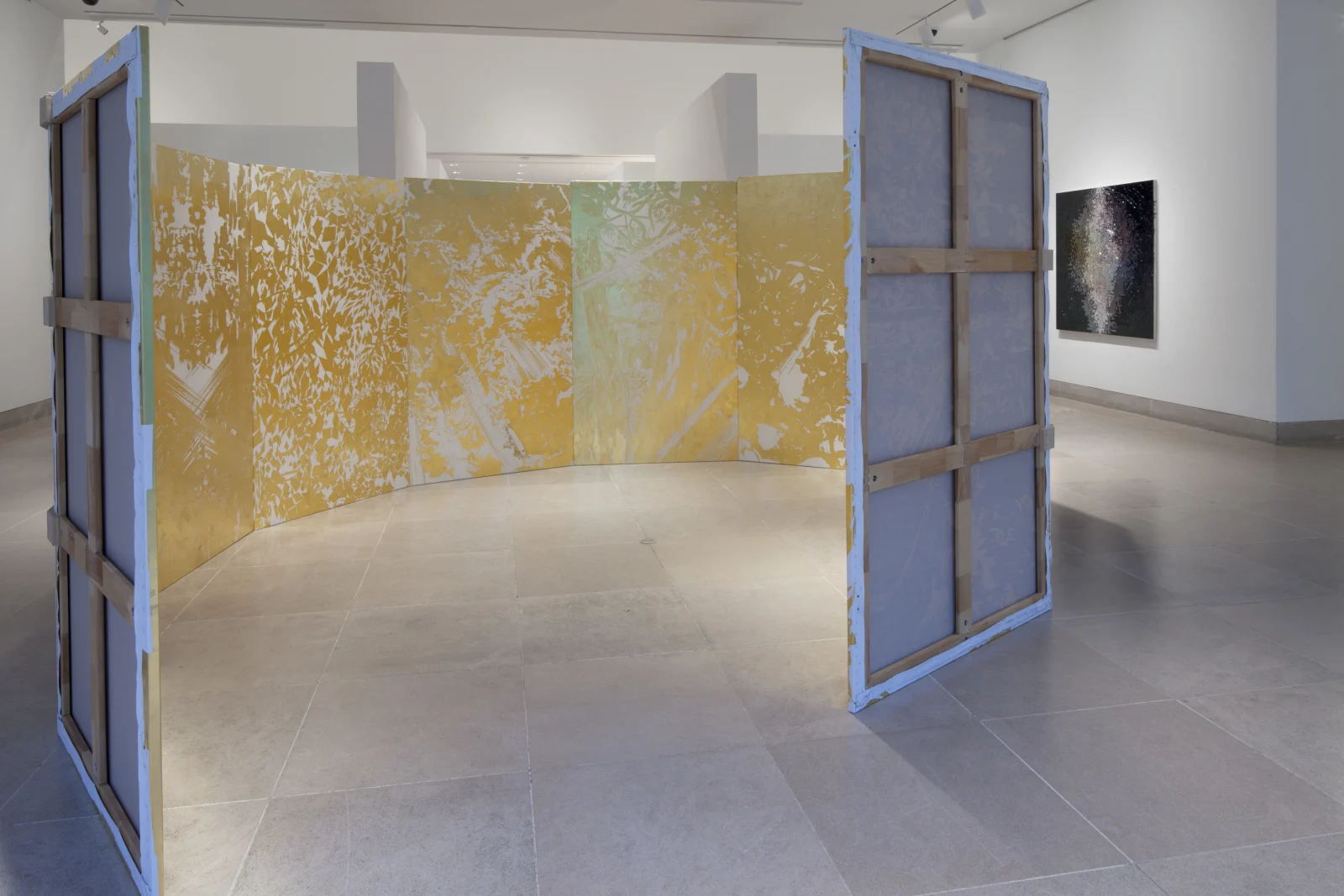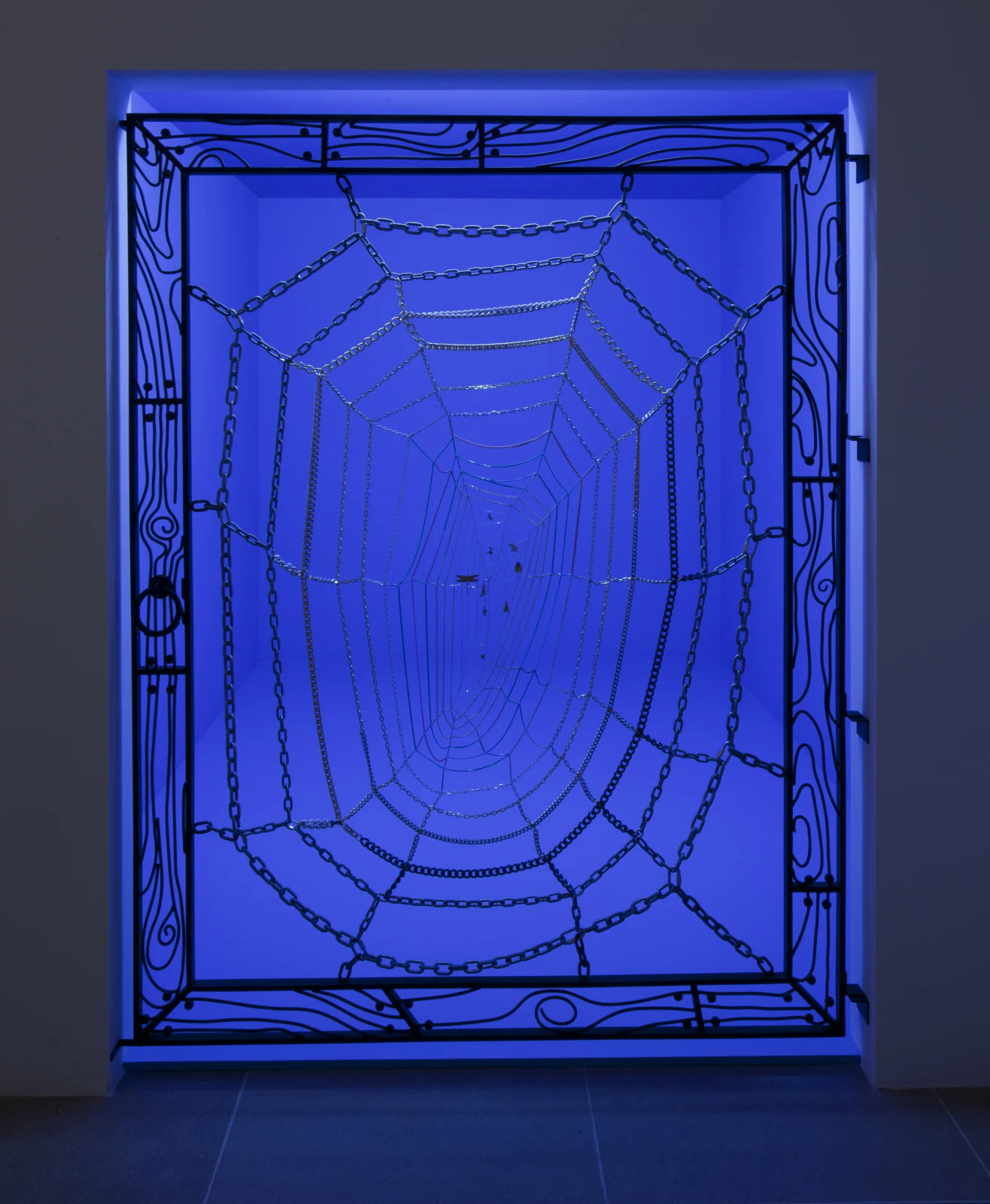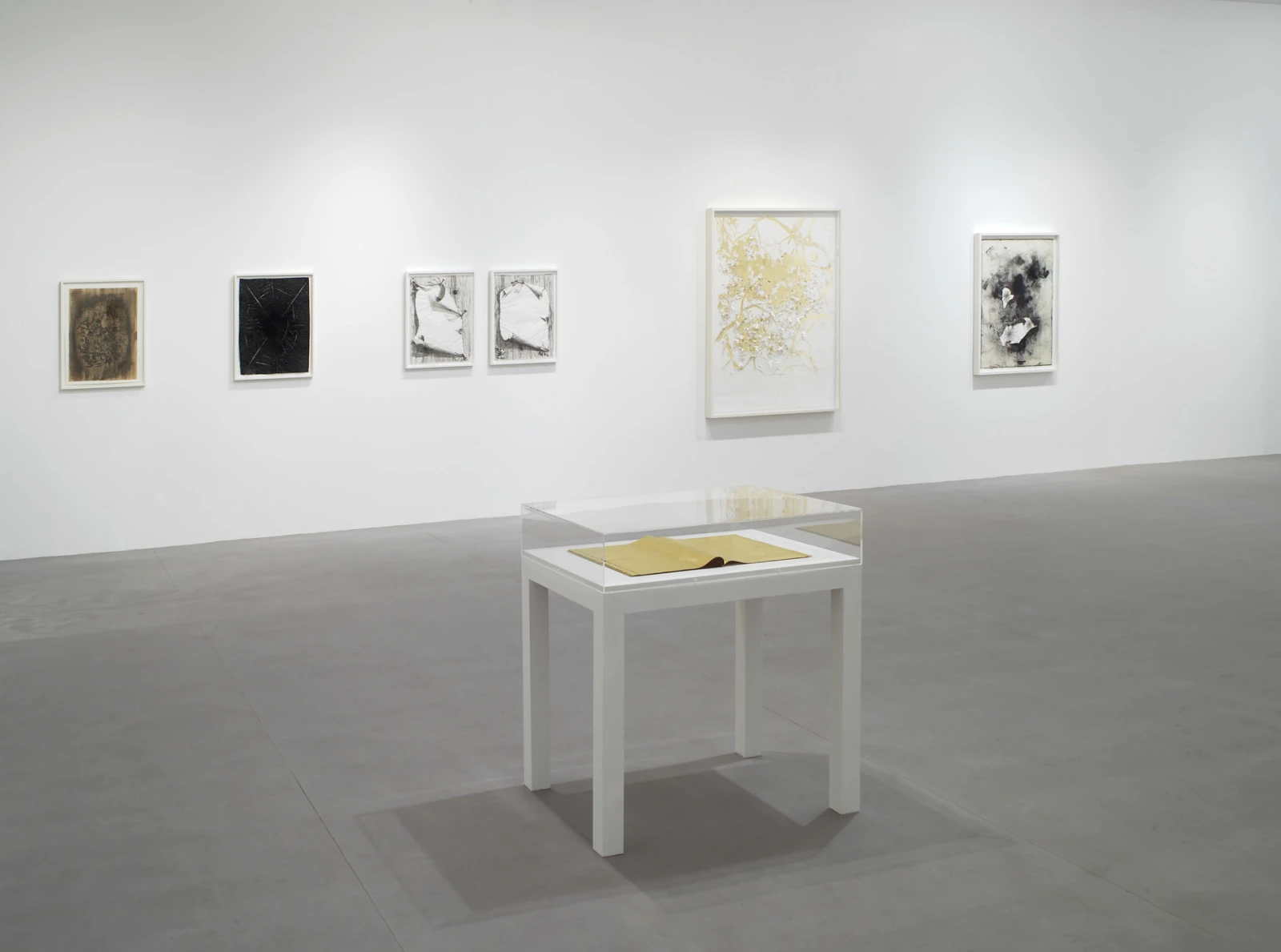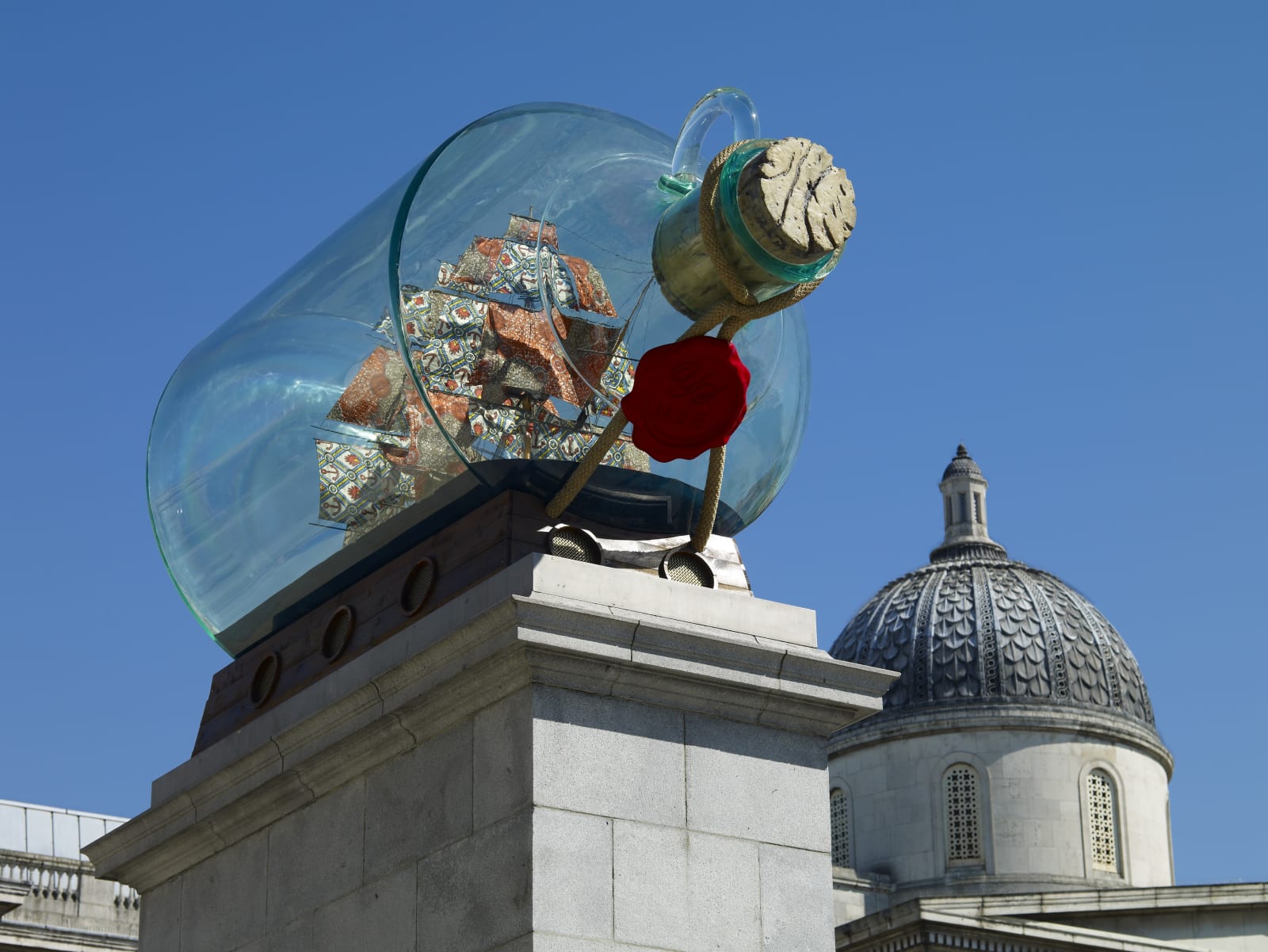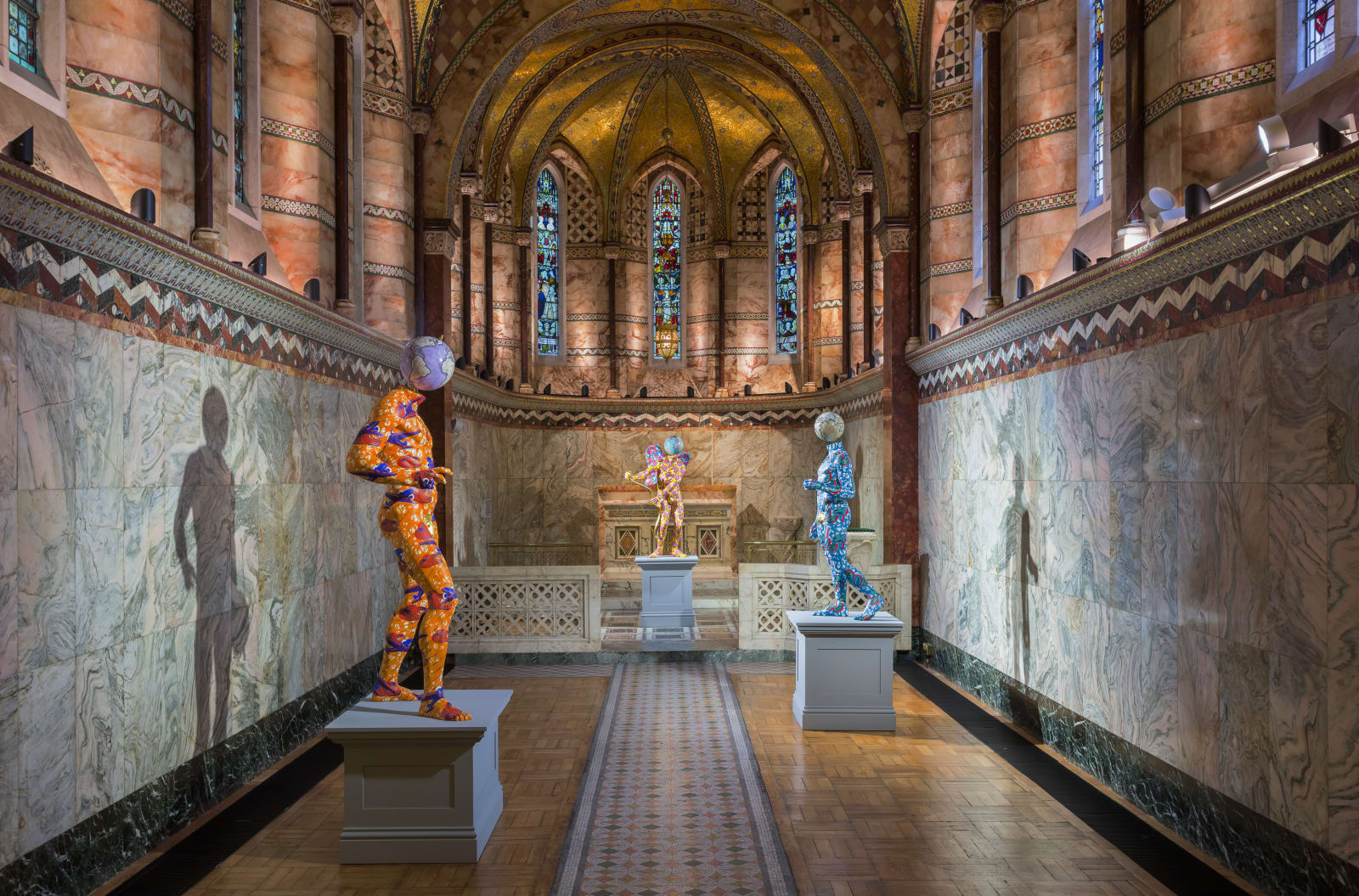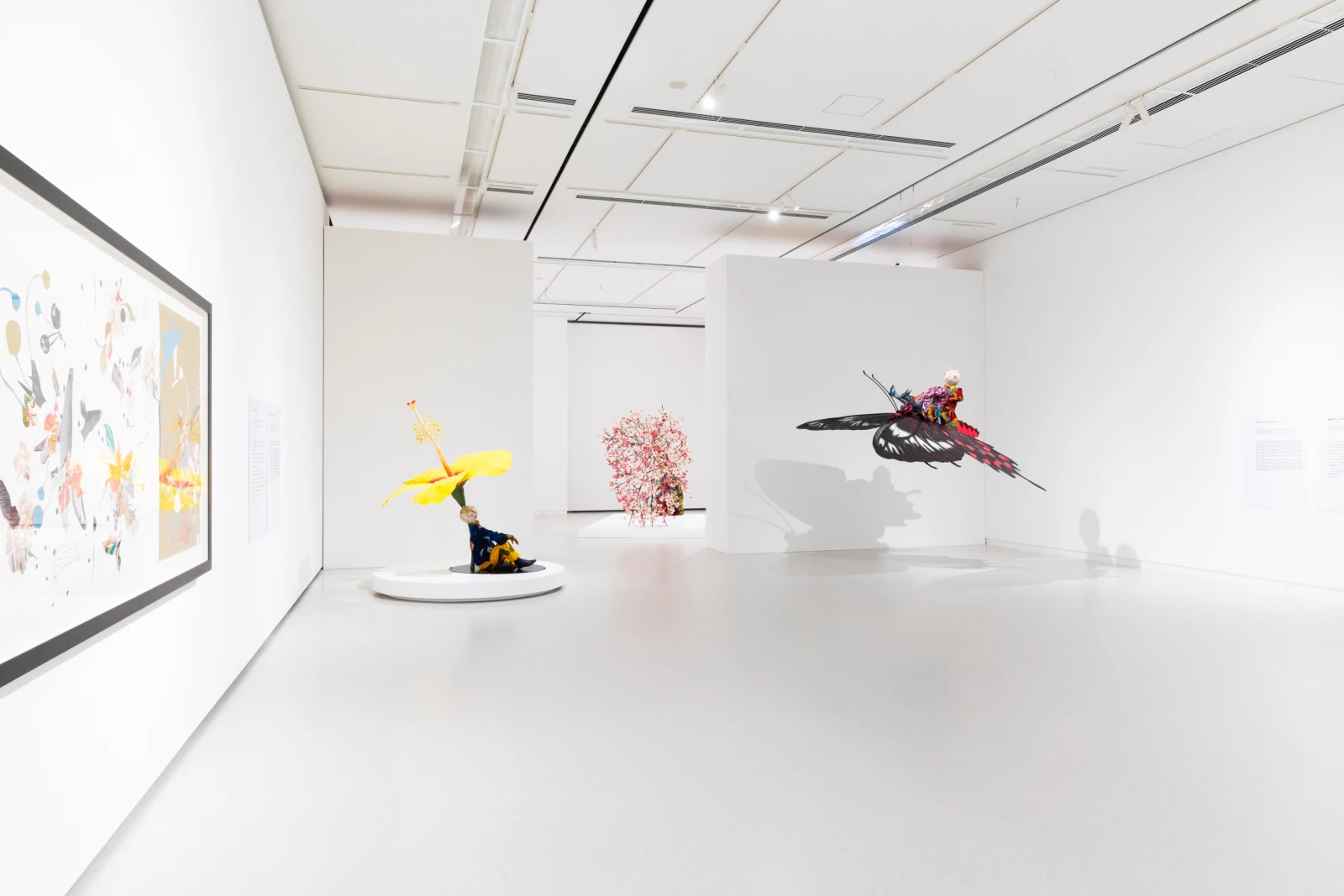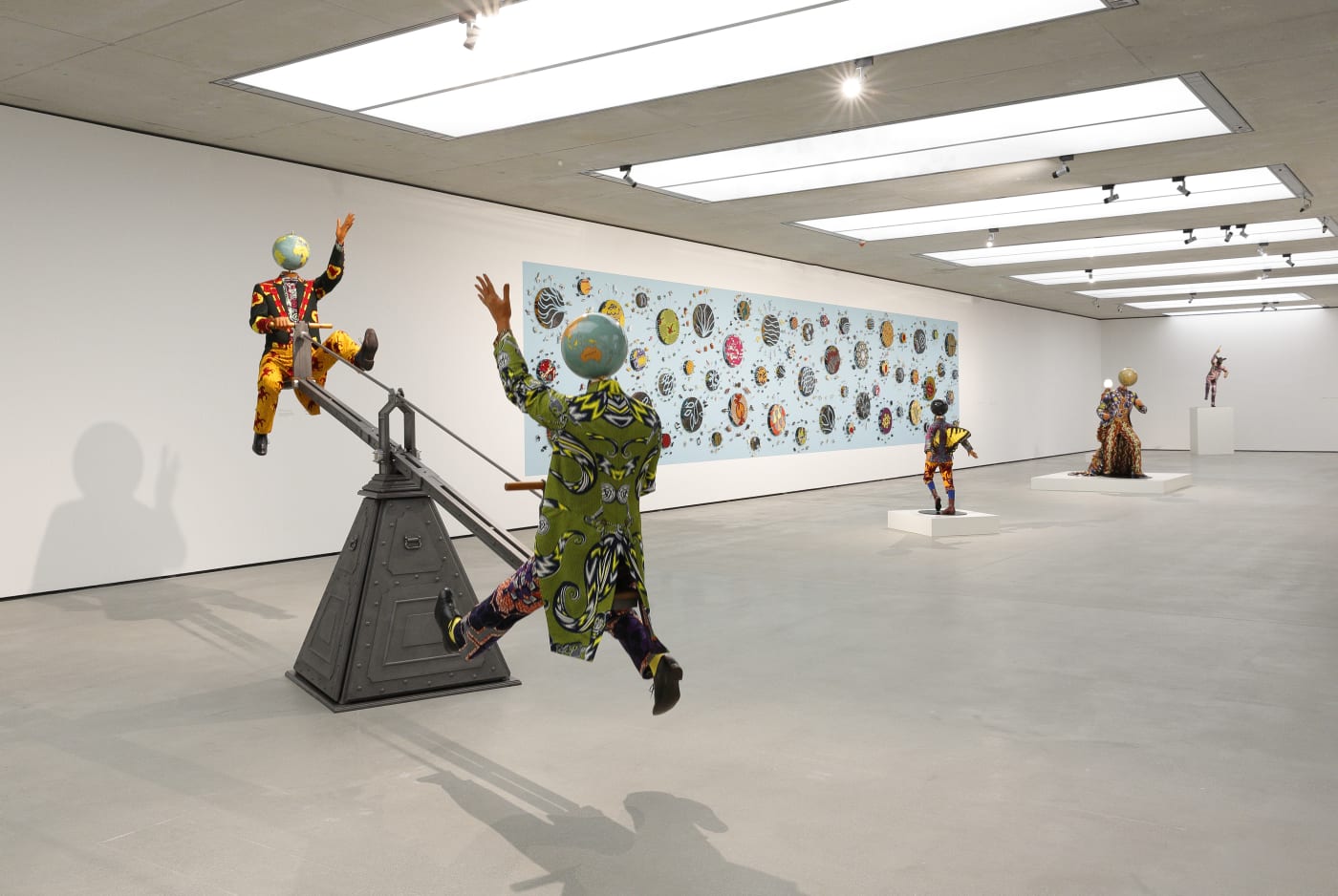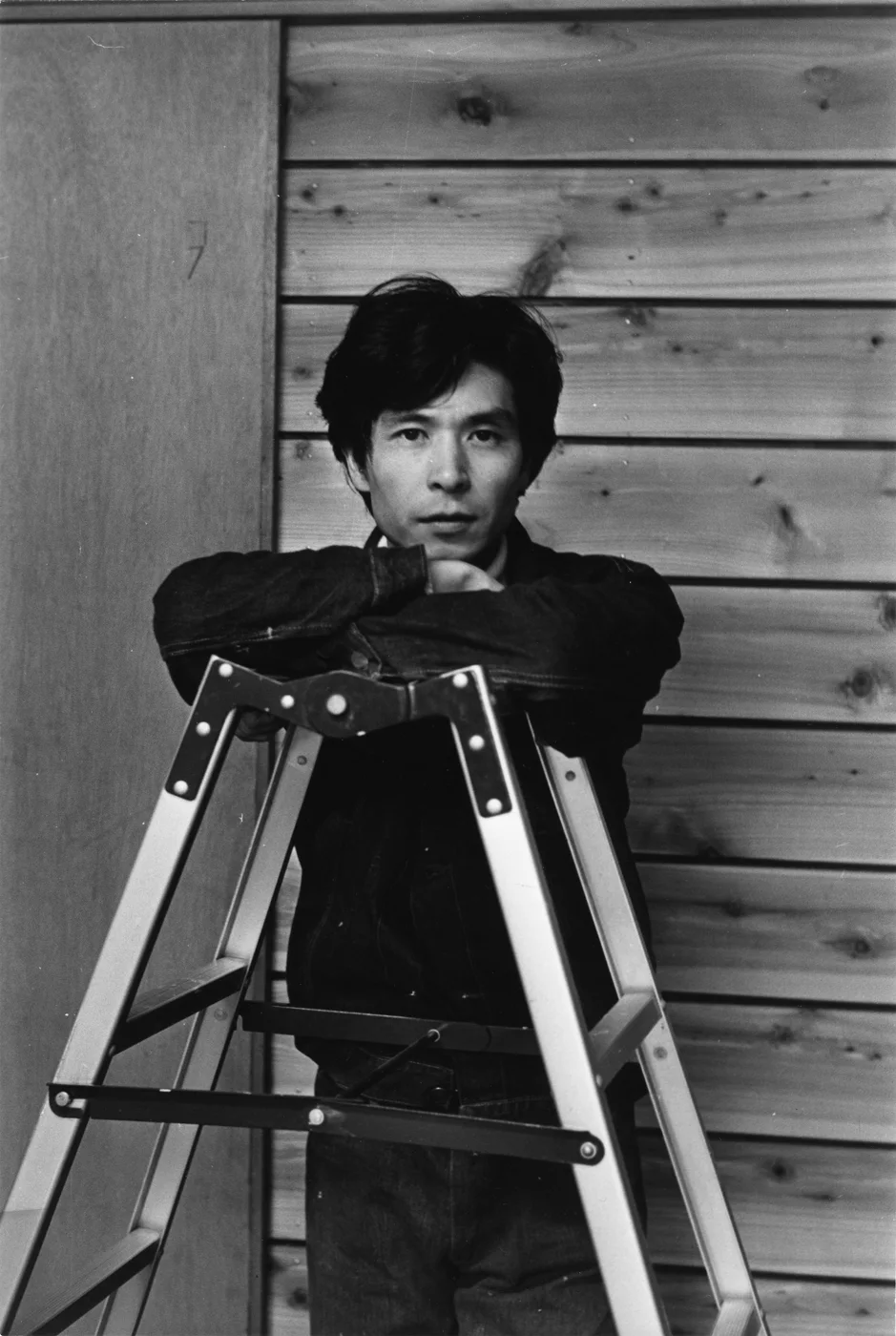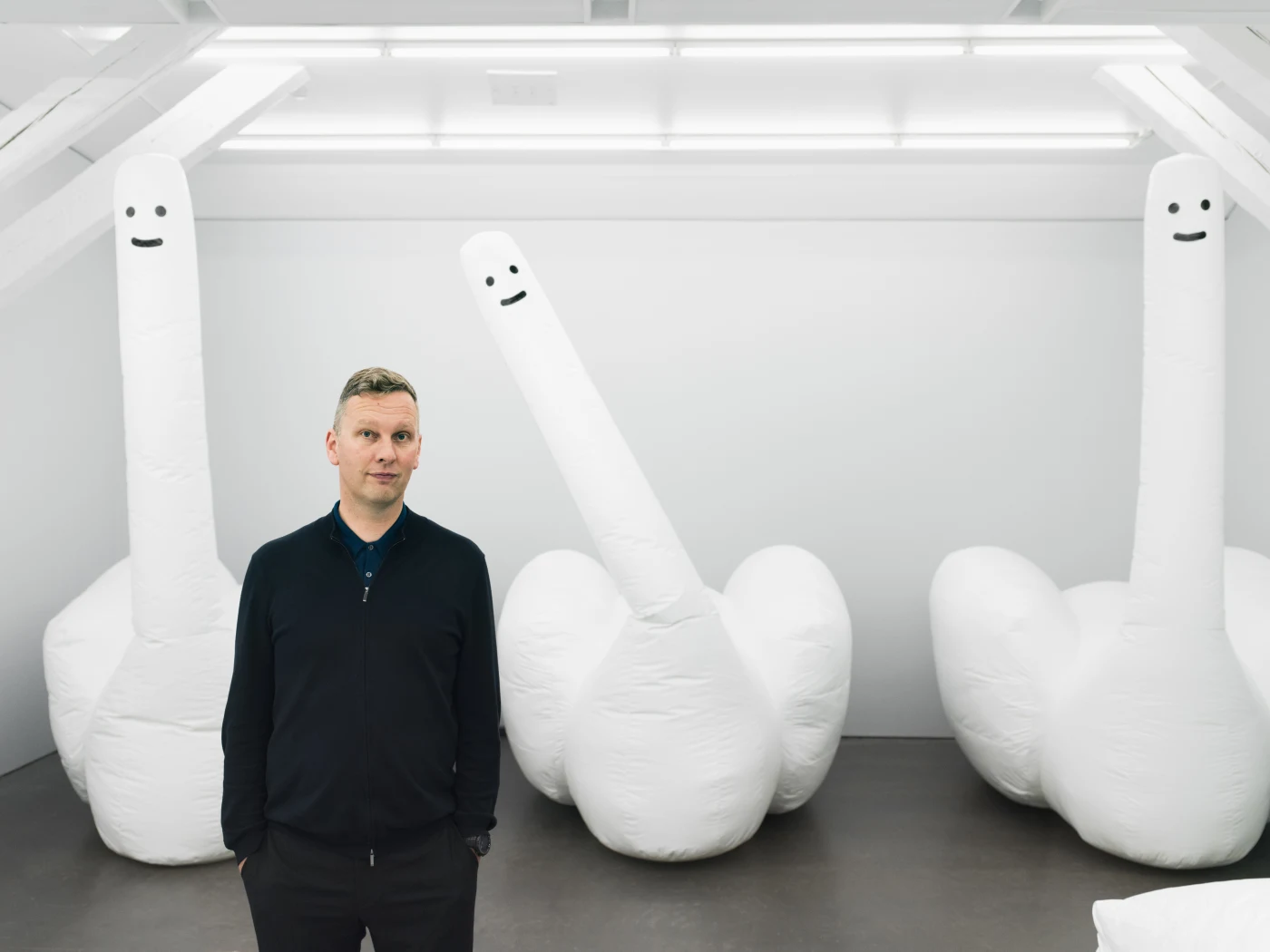Overview
“Sculptors seem to think of their work in drawing as divided into two classes: one a type of study drawing made previous to an actual work of sculpture; the other a drawing conceived as a thing in itself.”
In 1933, the Museum of Modern Art in New York staged an ‘Exhibition of Drawings by Sculptors’ that included work by Constantin Brâncuși, Henri Gaudier-Brzeska and Isamu Noguchi. The accompanying press release stated: “Sculptors seem to think of their work in drawing as divided into two classes: one a type of study drawing made previous to an actual work of sculpture; the other a drawing conceived as a thing in itself.” This Online Viewing Room similarly identifies the different ways in which drawing informs the sculptural practices of artists, bringing together works by Claire Barclay, Melvin Edwards, Tom Friedman, Kendell Geers, Jim Hodges, Yinka Shonibare CBE, David Shrigley and Jiro Takamatsu. The presentation includes personal commentaries from a number of the artists explaining the relationship between drawing and sculpture in their practices.
Scroll down to view works in the presentation.
In 1933, the Museum of Modern Art in New York staged an ‘Exhibition of Drawings by Sculptors’ that included work by Constantin Brâncuși, Henri Gaudier-Brzeska and Isamu Noguchi. The accompanying press release stated: “Sculptors seem to think of their work in drawing as divided into two classes: one a type of study drawing made previous to an actual work of sculpture; the other a drawing conceived as a thing in itself.” This Online Viewing Room similarly identifies the different ways in which drawing informs the sculptural practices of artists, bringing together works by Claire Barclay, Melvin Edwards, Tom Friedman, Kendell Geers, Jim Hodges, Yinka Shonibare CBE, David Shrigley and Jiro Takamatsu. The presentation includes personal commentaries from a number of the artists explaining the relationship between drawing and sculpture in their practices.
Juxtaposing a selection of significant sculptures and works on paper, the presentation is underpinned by a number of thematic threads which explore how each artist unlocks the sculptural quality of drawing to negotiate space, metaphor and materiality. Several artists see little difference between their drawings and sculptures, merely harnessing the materiality of each medium to best express their thoughts. As Tom Friedman states, it is just “a question of image or object”. Some use works on paper to traverse the boundary between two-dimensionality and three-dimensionality, defying the limits of space or schematically mapping out hypothetical structures. Harnessing the immediacy of drawing, others play out fantastical or symbolic imagery on the page before manifesting such thoughts in sculptural form.
“Sculptors seem to think of their work in drawing as divided into two classes: one a type of study drawing made previous to an actual work of sculpture; the other a drawing conceived as a thing in itself.”

Claire Barclay

CLAIRE BARCLAY, b. 1968, United Kingdom
“I see a direct correlation between the way I make sculpture and the way I have developed my approach to printmaking. The placement of shapes on the page is like arranging objects in space, and the production of printed images is like the related elements in my installations. The use of a limited colour palette (often tones of black, red or flesh), transparency, layering, a focus on negative space and the relationship of one shape to another are shared properties of both my sculptural and print works.”
"[Barclay assembles] objects that evoke their original form and function but take on new meaning in relation to each other and the space in which they are sited. Her prints relate closely to her sculptural practice through their experimentation of how solid forms relate to one another in space"
- Tate Collection, UK.

Melvin Edwards

MELVIN EDWARDS, b. 1937, United States
Melvin Edwards is a pioneer in the history of contemporary African-American art. While the artist's formal language engages with the history of abstraction and modern sculpture, Edwards' work is born out of the social and political turmoil of the civil rights movement in the United States. The presentation focuses on the artist’s enduring use of industrial materials and their symbolic associations – in this instance, metal chains – to explore themes of race, protest and social injustice in both his sculptures and works on paper. Recent drawings on handmade paper made in collaboration with renowned papermill Dieu Donné capture the stark shadows of tools associated with the art of blacksmithing.
“I was working relatively flat or in relief much of the time, but the welding had a real reciprocal relationship to where I already was in painting, in terms of the complexity of form within the process: both flat and three-dimensional. It’s almost like my sense of abstraction had an abstract figuration, I don’t mean in the imitation of figure, but in the sense of mountains, backs, shoulders, muscularities. I always liked three dimensions, in drawing and painting; I paid attention to chiaroscuro and the formalities of form in the Renaissance. Even when I wasn’t working in that kind of figurative way, in my head, it helped the dynamics of what I was doing, the power.”
- Melvin Edwards, 'The Oral History Project' (2014)

Tom Friedman

TOM FRIEDMAN, b. 1965, United States
“I was asked to write something about the relationship between my practice of sculpture and drawing. I see no difference between the two. When I approach an idea it can manifest as either a drawing or a sculpture. It is a question of image or object. Image is confined to the frame and object is confined to the environment in which it is presented, but they are each experienced and thought about based on the information that is presented to the viewer. Each work is an external object that the viewer experiences and thinks about.”
"His drawings carefully shedded definition over time, revealing his skill with space and tendency to compose counterintuitive scenes."
- Mason Cheek, in Always the Best by Tom Friedman and Mason Cheek, published to accompany the solo exhibition 'Always the Beginning' at Stephen Friedman Gallery, London (2018)


Kendell Geers

KENDELL GEERS, b. 1968, South Africa
“All of my work has been about the fragility of balancing the things I can control against losing control. For this reason, I love working with Plaster of Paris because it is essentially a liquid to begin with, slipping through my fingers and then suddenly, for a short minute or so, begins to harden and will take on the negative shape of whatever it is in contact with. I love this magical moment where the liquid chaos transforms into solid order as the plaster shifts from an infinite number of possibilities into the shadow of its host. In that moment I often think about William Blake's words, "To see a World in a Grain of Sand, And a Heaven in a Wild Flower, Hold Infinity in the palm of your hand, And Eternity in an hour." I use my body with its scars, fingerprints, textures and shapes as a mould, searching for ways I can use my three dimensional physical form to spiritualise matter in the materialisation of spirit."

"The drawings are just as visceral and embody the delicate harmony between creation and destruction as the controlled line surrenders to the accident of the splash. The process of making them is entirely three dimensional as I use my holistic body as if I were leaping into the sheet of paper like an ocean of consciousness. I see drawing as a natural process that is a bridge between my wild chaotic nature and undomesticated nature at large, so always work horizontally on the floor, like Jackson Pollock. It is vitally important that I work in harmony with nature and not against her because the drawings embody the energy of gravity and the momentum of a gesture. In this way the splash becomes a witness to the energy that has cast it down against the paper (or canvas). These splashes are the wounds or memories that have opened out into blossoms in the exorcism of my ‘Flowers of Pain’ (‘Les Fleurs du Mal’).
"Making paintings, drawings or sculptures is a process of transferring energy from one state of consciousness into another, a process of manifestation in which chaos is my guide and order is my escort.”
- Kendell Geers


Jim Hodges

JIM HODGES, b. 1957, United States
“My practice is one of refining and evolving with intention and purpose, a life that has meaning and usefulness. I have developed methods that record the story of my personhood, and these gestures manifest across a spectrum of different forms and materials in my artwork. In that category, drawing has been my primary method of exploring states of being. Sculpted manifestations in space, free of the flatness and limits of the page, are another way I have pursued capturing such ideas.”
'Still', 2019

Yinka Shonibare CBE

YINKA SHONIBARE CBE, b. 1962, United Kingdom
Describing himself as a “post-colonial hybrid”, Yinka Shonibare CBE creates work that explores issues of race and class through the media of sculpture, painting, photography, film, tapestries and public works. His ‘Climate Shit Drawing’ series explores themes of climate degradation, financial crisis and the sense of impending global apocalypse. Set against this projected doom are layers of bursting flowers using batik fabrics and delicately cut leaves made of gold. Shonibare’s drawings are raw and cathartic in nature, capturing the artist’s imagination in vivid detail. The artist’s fantastical ideas come to life in ‘Boy Sitting Beside Hibiscus Flower’. Blown up to theatrical scale, it captures a child in contemplative thought seated underneath the yellow petals of a monumental flower.

David Shrigley

DAVID SHRIGLEY, b. 1968, United Kingdom
“I make a large number of drawings but only a small number of sculptures. Drawing is something I do a lot of the time and is probably the thing I am best known for. I used to make all my sculptures myself (perhaps 20 years ago) but then I started getting other people to help me and gradually it has become quite a hands-off process. In more recent years my sculptural work has moved away from representative work towards functional objects.
"A lot of the things I make now have a use in the real world; guitars, telephones, calculators, etc. I look upon drawing and sculpture as serving the same purpose: to fill a space. Drawings fill the space on the paper (and sometimes on the wall) and sculpture fills three dimensional space. I make sculpture partly to make people aware that I am willing to fill space so I can get exhibitions in museums.”



Jiro Takamatsu

JIRO TAKAMATSU, 1936-1998, Japan
Jiro Takamatsu’s work combines subversive and playful aspects of Dada and Surrealism with an idiosyncratic use of Minimalism’s refined visual language. Throughout his career, Takamatsu sought to explore the boundaries of reality, our ties to the physical world and the relationships of objects to space. As his fellow artist Nakanishi observed, Takamatsu uncovered and probed the gap between “reality and non-reality”. Central to his efforts during the 1970s and 1980s was an investigation into the artifice of pictorial space. The presentation juxtaposes significant sculptures and works on paper from this period that manifest Takamatsu’s exploration of two-dimensional and three-dimensional space with precise configurations of geometric forms.
“It seems that there is always great uncertainty in our being concerned only with particular (partial) elements of a matter. I think therefore it is necessary to have more total relation to a matter within the range of our own capacity. Sometimes such relation arises merely from our being aware of a matter and hardly with any effort, but for most occasions some action is required. To me this action is artistic creation.”
- Jiro Takamatsu, ‘Comment’, in ‘Beyond Man and Matter’, exhibition catalogue, Tokyo Metropolitan Art Museum (1970)


